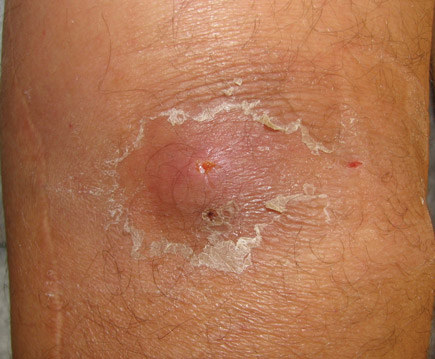There's more to Medicare's Annual Wellness Visit
Clinicians and office staff can benefit from a refresher course about how to code claims correctly for prompt payment.
With coding and payment policy regarding the Annual Wellness Visit (AWV) constantly changing and updating, office staff and clinicians can benefit from a refresher course about how to code claims correctly for prompt payment.
The AWV is a face-to-face preventive visit for beneficiaries, not a head-to-toe physical examination. The AWV includes a personalized prevention plan of service. Section 4103 of the Affordable Care Act specifically intended this visit to furnish personalized health advice, referrals as appropriate for health education, and preventive counseling services or programs aimed at reducing identified risk factors, as well as to promote self-management and wellness.

However, there is much more to the AWV. In the past, Medicare beneficiaries often did not receive the preventive and wellness services they needed to stay healthy, to avoid or delay the onset of disease, and to lead productive lives. This was due, at least in part, to cost-sharing requirements that were barriers to access. The AWV aims to help alleviate such barriers.
Conducting the visits
The AWV is covered once every 12 months. Beneficiaries are eligible to receive one if they have had Medicare Part B for longer than 12 months or if it has been 12 months since they received their Initial Preventive Physical Examination (IPPE). Beneficiaries do not need to receive an IPPE to be eligible for an AWV.
Again, the AWV is not the same thing as an annual physical, because there is no physical exam. The AWV, like the IPPE, is best furnished to beneficiaries when their health status is stable and they are open to discussing preventive and screening services available through Medicare.
A first AWV includes the following elements:
- a Health Risk Assessment (HRA),
- establishment of an individual's medical and family history,
- establishment of a list of current clinicians and suppliers that regularly provide care to the beneficiary,
- measurement of blood pressure, height, weight, or waist circumference, if appropriate,
- detection of any cognitive impairment,
- a review of potential risk factors for depression, functional ability, and level of safety,
- establishment of a written screening schedule, such as a checklist for the next 5 to 10 years,
- a list of the risk factors and conditions for which interventions are recommended, and
- provision of personalized health advice and referrals for health education and preventive counseling.
Subsequent AWVs mostly focus on updating the information that was provided during previous AWVs.
AWVs can be done by a medical professional, including a physician, physician assistant, nurse practitioner, or a clinical nurse specialist; by a health professional, such as a health educator, registered dietitian, nutrition professional, or other licensed practitioner; or by a team of special medical professionals working under the direct supervision of a physician.
However, there are many benefits to AWVs furnished by the primary care physician. Physicians and/or practices should discuss these benefits with their patients and encourage them to get their AWV in their office, where the patient is known, rather than at a retail clinic. These visits are designed to help Medicare beneficiaries and their doctors develop personalized prevention plans, at no cost to the patient, that take a comprehensive approach to improving health and preventing disease. This means that the beneficiary and his or her clinician can work together to develop a proactive strategy that manages health based on a beneficiary's specific health needs.
Like the IPPE, the AWV is not subject to “incident to” rules. When the visit is performed by a team of medical professionals working under the direct supervision of the physician (direct supervision in the office setting means that a physician must be present in the office suite and immediately available to furnish assistance and direction throughout the performance of the procedure or service), the supervising physician will bill Medicare for the visit.
Using Health Risk Assessments
In 2012, CMS modified the AWV regulations to include and take into account the results of an HRA, which is a tool that collects self-reported information known to the beneficiary. The HRA can be completed by a beneficiary or a health professional before or as part of the AWV encounter.
The HRA addresses the following topics:
- demographic data,
- self-assessment of health status,
- psychosocial risks,
- behavioral risks,
- activities of daily living, and
- instrumental activities of daily living.
Ideally, to maximize physician-patient face-to-face time, patients should complete the HRA prior to the visit and bring the following information with them to their appointment:
- any pertinent medical records,
- family health history,
- a list of medications and supplements, including dietary supplements that they may be taking, and
- a list of current clinicians and suppliers involved in their health care.
Billing and coding the visit
Two G-codes are used to identify the AWV for purposes of Medicare payment: G0438 AWV, including Personalized Prevention Plan Service, first visit, and G0439 AWV, including the Personalized Prevention Plan Service, subsequent visit. These services are typically provided in a physician's office. However, the services can be provided in a facility and indicated by “location of service” on the Form 837.
Any appropriate diagnosis code is acceptable for billing an AWV. Examples of acceptable diagnosis codes that could be included on the claim are V70.0, V70.8, or V70.9, as well as any other valid, appropriate diagnosis codes.
A first AWV can be billed only once in a lifetime using code G0438. The subsequent AWV, G0439, can be billed annually provided that 11 full months have passed since the previous AWV.
Medicare providers may perform a medically necessary diagnostic electrocardiogram (EKG) on the same day as an AWV (G0438 or G0439). Because some past claims for diagnostic EKGs performed on the same day as the AWV have been denied, CMS has made claims processing changes to allow payment for a diagnostic, medically necessary EKG performed on the same day as an AWV.
The annual Medicare Part B deductible and co-insurance are waived for the AWV. The first and subsequent visits may be billed with any medically necessary evaluation and management (E&M) service. When E&M services are furnished during an IPPE visit, the practitioner must append modifier 25 to the E&M code for payment. Cost sharing will apply to the E&M service that is furnished during the AWV, since the Affordable Care Act only waives the cost-sharing requirement for the latter. However, the clinician should notify patients when additional services are not covered by Medicare and let them know that they will be responsible for payment.
Even though it is not a requirement, it is good practice to use some documentation, such as an Advance Beneficiary Notice, to notify patients that they will need to pay for the additional noncovered service. When services substantially overlap with those furnished in an AWV, practitioners are responsible for billing appropriately when providing additional noncovered services.
For more information and resources to use when providing the AWV, go online to ACP's Running a Practice resource.




